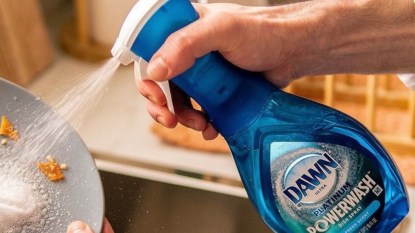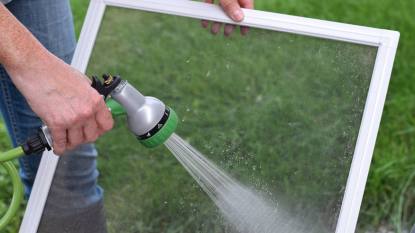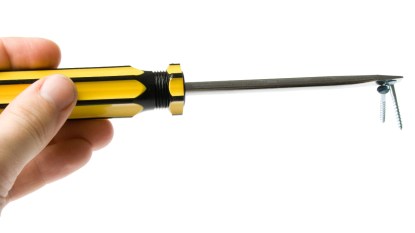How to Clean the Bottom of an Iron So Those Black Spots Won’t Rub Off on Your Clothes
Laundry and appliance pros reveal the best ways to clean every kind of stain from the bottom of an iron
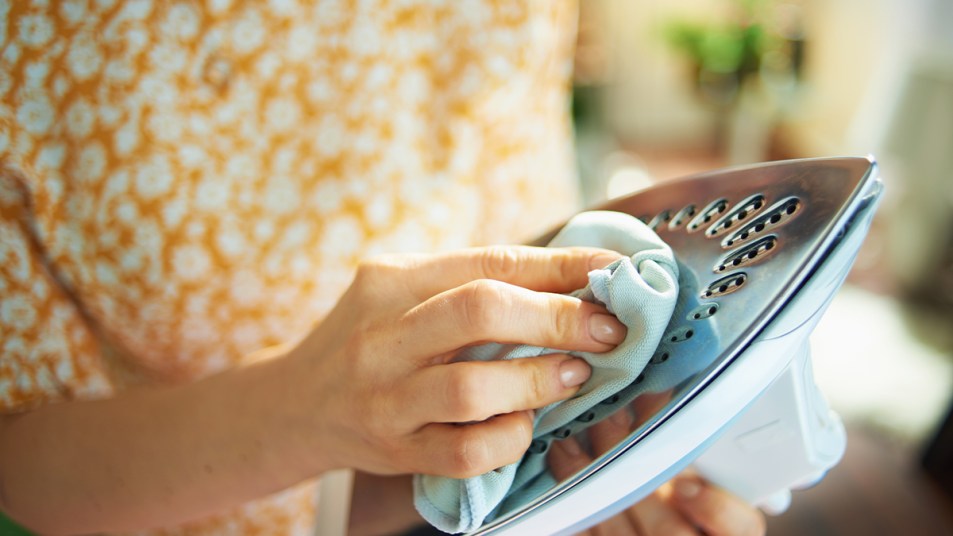
Notice an odd black stain on your freshly-ironed blouse, a strange white residue on your newly-pressed black pants or a rusty tinge on your just-steamed sweater? If you’re sensing a pattern here, you’re right — your iron may be to blame. You know to change your sheets every week and scrub the toilets — but you may not have realized that your iron could also use a quick wipe-down now and then. Doing just that not only will extend the life of the appliance, it will also protect your clothes from damage. Read on to learn tips from fabric care and cleaning pros on how to clean the bottom of your iron.
Why do irons get dirty?
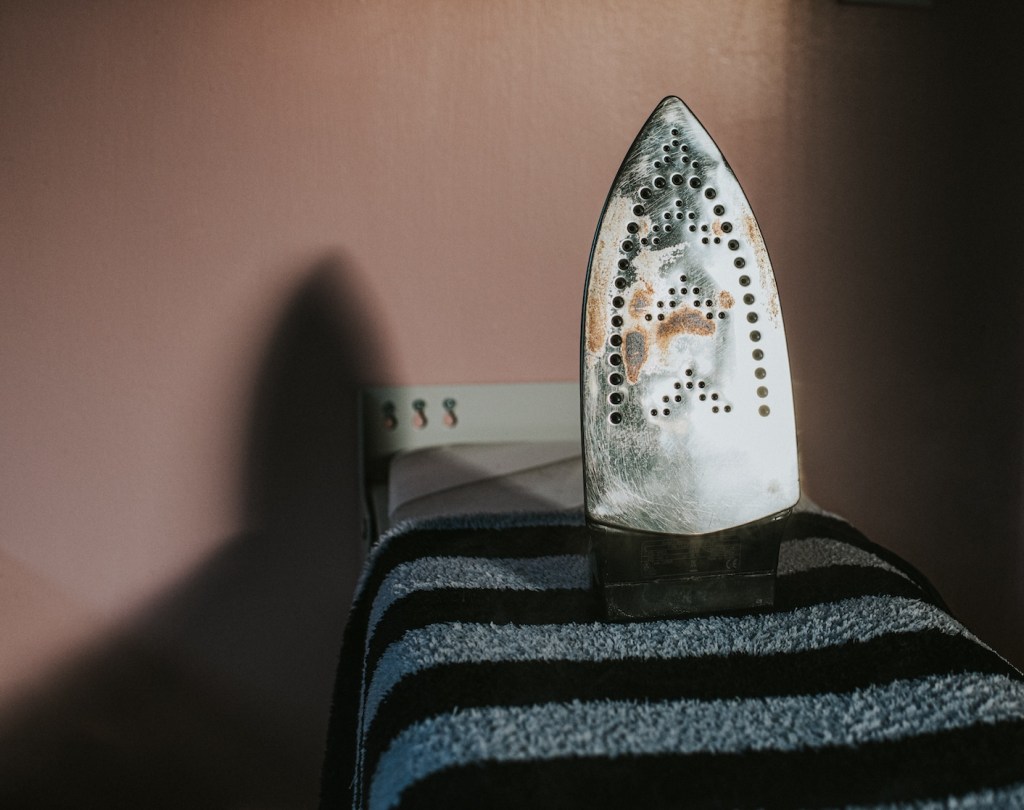
The bottom of your iron — called the soleplate — comes into contact with several substances when performing its job, “including dirt, dust, traces of laundry detergent, spray starch, lint and melted fabric fibers,” explains Barbara Stern, fabric care expert for Ottoman Textiles. “Tap water in the iron’s steam reservoir can also cause mineral deposits to form. Over time, these substances build up, creating stains on the iron’s metal surface.”
Stains on the soleplate can transfer to your clothes, leaving permanent brown or black stains. If calcium from hard water builds up, it can leave white mineral residue on darker garments, while iron build-up can cause rust stains. Says Stern, “These materials can also clog up the steam vents on the bottom of the iron, resulting in burnt clothes.”
To clean black marks from the bottom of an iron
First, sprinkle a bit of salt or baking soda on a few paper towels and lay them on your ironing board. Next, turn your iron onto a medium-high setting; let it heat up, then use it to “iron” the towels, says Jade Piper, a professional cleaner with BetterCleans. “The salt or baking soda will gently scrub the soleplate while the paper towels absorb the stain-causing materials.” Just keep replacing the towels until no more stains transfer onto them, she suggests. Then, turn the iron off, let it cool and wipe it down with a damp sponge and a little dish soap; let dry.
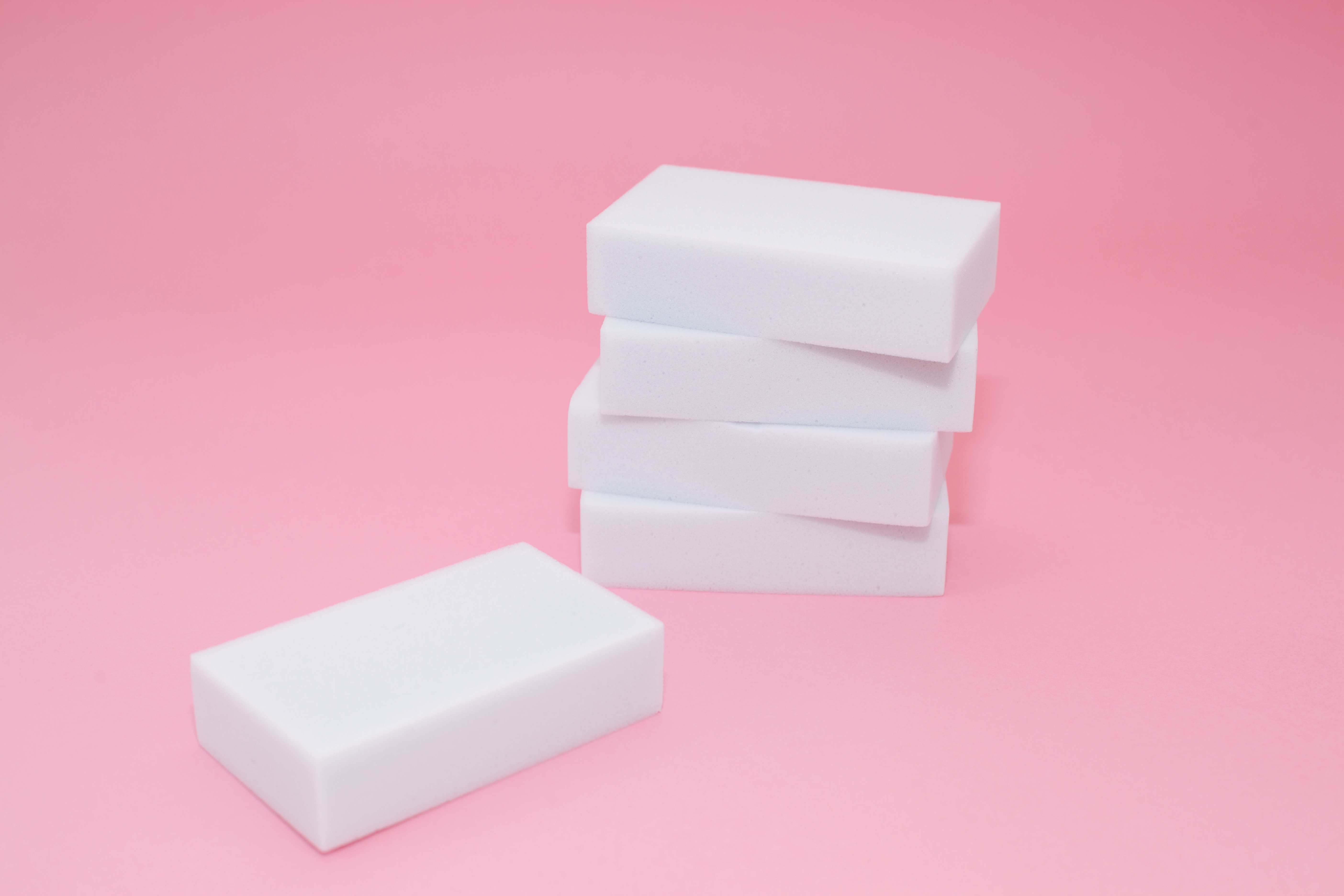
Another effective option: Magic Eraser sponges. Simply dampen one with water, squeeze out the excess, then rub it along the bottom of a warm iron until dark marks disappear. “Be sure to work it into the steam holes, as well,” suggests Piper. These sponges are made from melamine foam and are gently abrasive, helping to scrub away stains without breaking a sweat.
Black spot proving particularly stubborn? Piper suggests letting the appliance heat up as high as it can go, then using pliers, carefully press an acetaminophen (i.e., Tylenol) tablet onto the black spot. This OTC medication is mildly acidic and will melt into a gel that eliminates dark burnt-on stains easily.
To clean grease streaks from the bottom of an iron
These stains are typically caused by starch buildup and detergent residue and can be removed by dampening a clean cloth with vinegar or rubbing alcohol and gently wiping down the soleplate, suggests Muffetta Krueger of Muffetta’s Domestic Assistants. “Let the iron warm up a bit until it’s warm to the touch, which will soften the greasy residue so it comes off more easily.”
No rubbing alcohol or vinegar handy? Nail polish remover also works, says Krueger, or you can use dryer sheets, which will both absorb grease and scrub the iron’s surface clean.
To clean mineral deposits from the bottom of an iron
White vinegar is key to removing white calcium or red iron stains, says Piper, because acetic acid in vinegar is one of the safest and most effective ways to break down minerals. To do: “Simply mix a 1:1 ratio of white vinegar and distilled water, dampen a clean sponge in the mixture and wipe down the bottom of the iron,” she says. (Click through for more white vinegar uses.)
For especially stuck-on deposits, Piper suggests dipping the damp sponge in cream of tartar and use that as an abrasive — cream of tartar is also mildly acidic, so it won’t neutralize the white vinegar, but it will add gentle scrubbing power to break up crusty spots.
(Click through to learn more about removing mineral deposits and hard water stains from glass.)
To clear clogged steam vents
Just grab a pair of tweezers or a toothpick and use it to pull stuck-on fibers or other gunk out of the iron’s holes, advises Krueger. Next, dip a toothbrush in white vinegar and give the vents a quick scrub to remove any remaining residue.
“After the holes are cleared, ‘descale’ the iron,” Stern adds. “This will get rid of mineral traces that may be in the reservoir.” To do, fill the reservoir with equal parts distilled water and white vinegar, then turn the iron on high and let it sit and steam for about 10 minutes. Once that’s done, turn the iron off, pour the white vinegar mixture out, rinse the iron with plain distilled water and let it dry before putting it away.
To clean a melted button from the bottom of an iron
First, let the iron (and plastic button) cool completely by submerging it in a shallow ice water bath, suggests Bret Jackson, cleaning expert at Letti & Co. Next, use a butter knife or old credit card to scrape the plastic off the metal surface; then turn the iron on and use the paper towel-and-salt method above to absorb any remaining plastic residue.
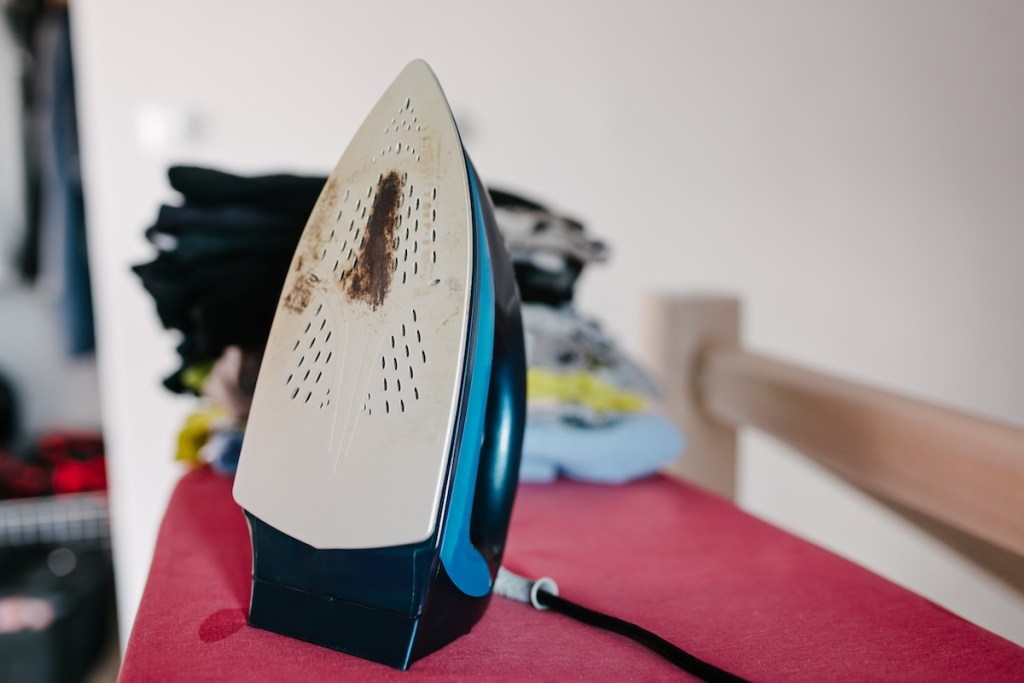
To prevent stains in the future
Keep mineral deposits at bay over the long term, by avoiding tap water in the steam reservoir and using distilled water instead, Krueger says. It’s free of minerals so they won’t be able to collect on or in your iron.
Experts recommend cleaning the iron’s soleplate and steam vents twice a year, “or as often as you need, which may be more or less frequently depending on how often you iron and which laundry products and water you use,” says Stern.
For more appliance cleaning tips, click through the links below.
6 Brilliant Oven Cleaning Hacks That Will Make Your Life Easier
Don’t Put Dish Soap in Your Washing Machine to Whiten Clothes — Try This Cleaning Hack Instead


